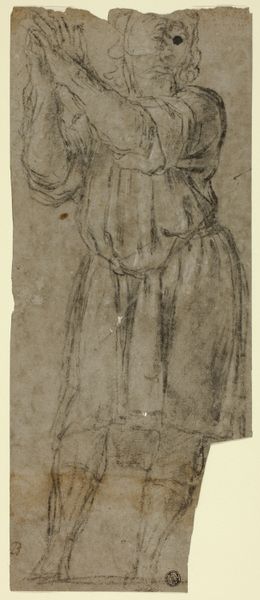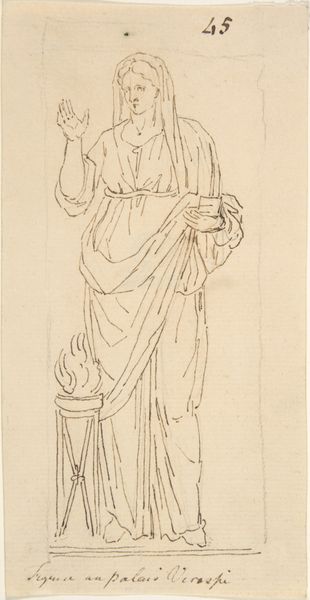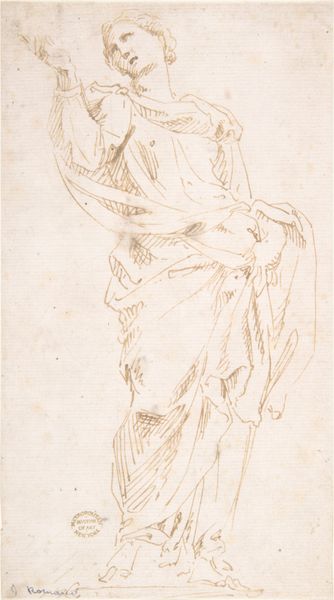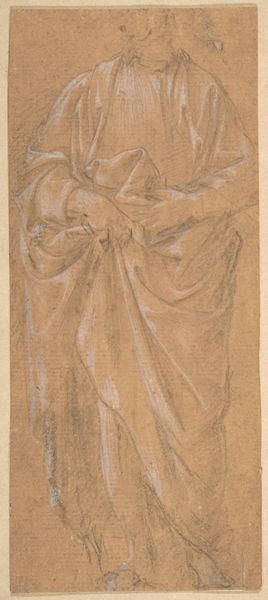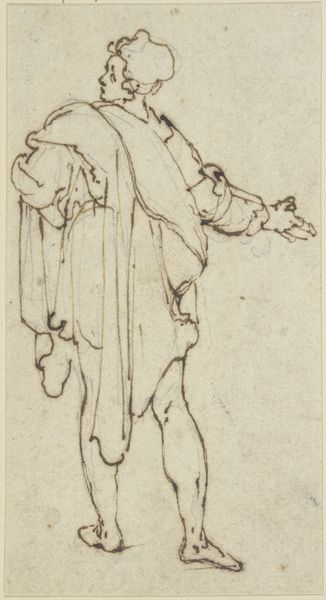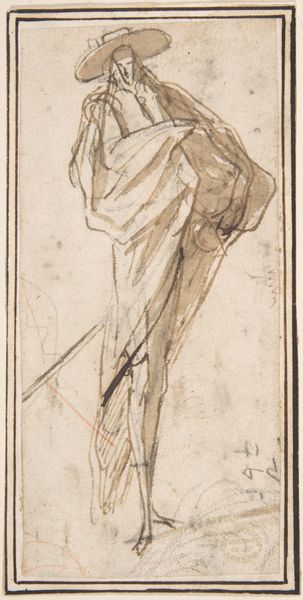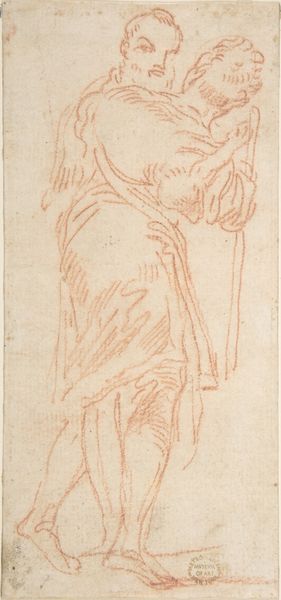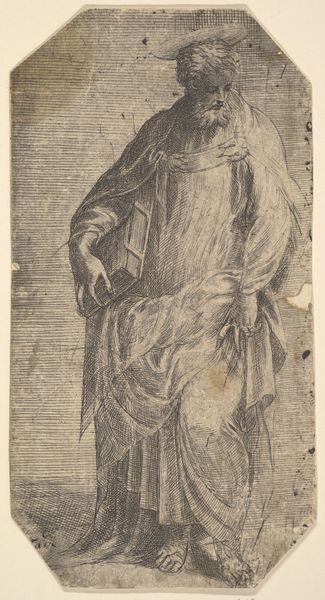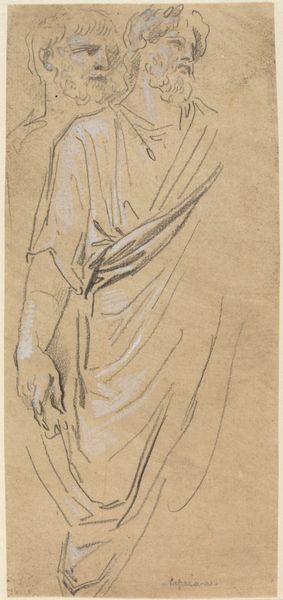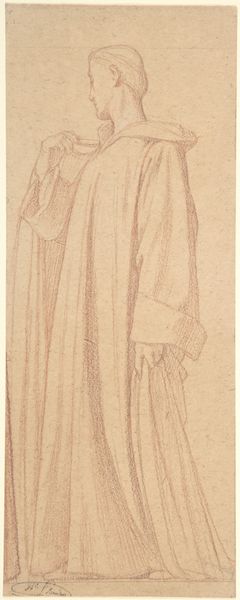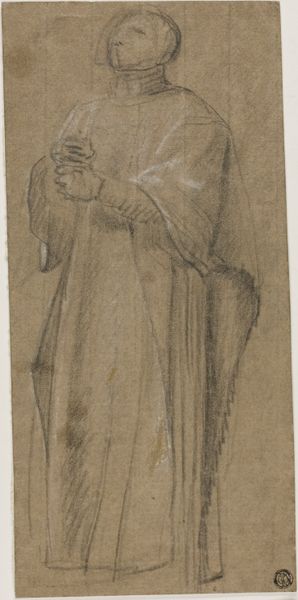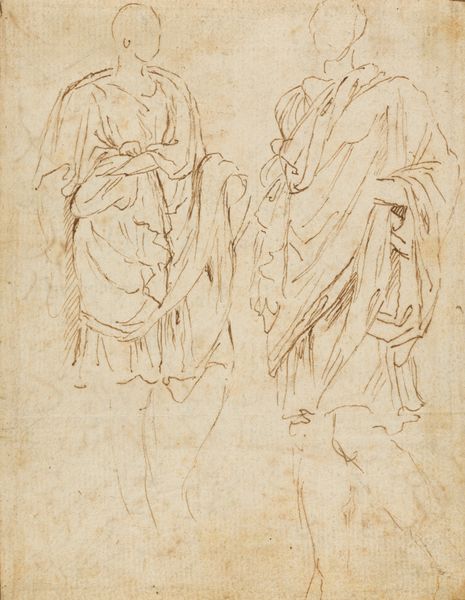
drawing, paper, ink
#
portrait
#
drawing
#
figuration
#
paper
#
11_renaissance
#
ink
Copyright: Public Domain
Curator: This drawing, held at the Städel Museum, is titled "Kneeling Nun." It's attributed to Francesco Vanni, and it's executed in ink on paper. Editor: My first impression is one of fragile intensity. The line work feels so raw and immediate. I get a sense of vulnerability from the subject. Curator: Absolutely. Vanni's economy of line is masterful. Notice the way he uses hatching to suggest volume and shadow, particularly in the folds of her habit. The composition relies on vertical lines—reinforcing the figure's upward gaze, and directing us to consider not only the ground, but the figure's yearning for a higher plane. Editor: And that gesture, the upturned palms… such a primal symbol of supplication across cultures and time. It reminds me of votive statues unearthed from ancient temples, or even modern images of surrender and peace. The symbol reverberates with accumulated emotional weight. Curator: Precisely. And the artist, or his patron, has used that resonance to direct how one perceives this scene. The rapid strokes imply a great freedom but still hold firm within the outlines of her religious dress; a habit. Do you note that Vanni did not include color? That decision makes the observer examine their own feelings of what is contained in her soul rather than the beauty or ugliness of the real. Editor: It's as if the artist invites us to project our own understanding of devotion and inner turmoil onto this anonymous figure. But without other signifiers like setting or date, do we lose context? Can we tell for what devotion she prays? Curator: While its lack of background is notable, the composition gives primacy to a direct, personal emotionality, which it relays to an equally emotive beholder. Editor: Perhaps. The universality of kneeling, hands raised in prayer, is ultimately what endures, making the specific setting almost irrelevant. Curator: A compelling idea to consider, it allows us to view this study through different lenses of humanity. Editor: It shows how, across time, art enables people to reflect upon ourselves, and our ever shifting, similar desires for grace.
Comments
No comments
Be the first to comment and join the conversation on the ultimate creative platform.
